- Home
- Ray Bradbury
Killer, Come Back to Me
Killer, Come Back to Me Read online
Contents
Cover
Some Other Hard Case Crime Books You Will Enjoy
Title Page
Leave us a review
Copyright
Dedication
Introduction by Jonathan R. Eller
A Touch of Petulance
The Screaming Woman
The Trunk Lady
“I’m Not So Dumb!”
Killer, Come Back to Me!
Dead Men Rise Up Never
Where Everything Ends
Corpse Carnival
And So Died Riabouchinska
Yesterday I Lived!
The Town Where No One Got Off
The Whole Town’s Sleeping
At Midnight, In the Month of June
The Smiling People
The Fruit at the Bottom of the Bowl
The Small Assassin
Marionettes, Inc.
Punishment Without Crime
Some Live Like Lazarus
The Utterly Perfect Murder
Afterword: Hammett? Chandler? Not to Worry!
Additional Copyright Information
“That’s not Ricky Wolfe.”
It was a flat statement.
Broghman felt his gun in his palm slip like a frightened animal. His breath hissed in his nostrils. In the silence that followed, he stopped dead still and there was only the sound of Julie’s high heels tacking along the wooden floor and slowly, with a kind of frozen dread, coming to a halt, too.
Broghman turned. Out of the shadow a guy slipped who was too well-dressed for his own good. With a long white horse-face and red-rimmed, tired eyes and sweat on his cheeks.
Broghman pulled his gun, and while the darkness got darker, and there was only Merritt in front of him, and the others waiting, he swore, tightened up and fired three shots.
Merritt folded over the bullets, taking them into him with curious, pushing, helpful fingers. He fell flat down on his head, choking…
SOME OTHER HARD CASE CRIME BOOKS YOU WILL ENJOY:
JOYLAND by Stephen King
THE COCKTAIL WAITRESS by James M. Cain
BRAINQUAKE by Samuel Fuller
THIEVES FALL OUT by Gore Vidal
QUARRY by Max Allan Collins
PIMP by Ken Bruen and Jason Starr
SINNER MAN by Lawrence Block
SNATCH by Gregory Mcdonald
THE LAST STAND by Mickey Spillane
UNDERSTUDY FOR DEATH by Charles Willeford
A BLOODY BUSINESS by Dylan Struzan
THE TRIUMPH OF THE SPIDER MONKEY by Joyce Carol Oates
BLOOD SUGAR by Daniel Kraus
DOUBLE FEATURE by Donald E. Westlake
ARE SNAKES NECESSARY? by Brian de Palma and Susan Lehman
SHILLS CAN’T CASH CHIPS by Erle Stanley Gardner
KILLER,
Come Back
to Me
THE CRIME STORIES OF
Ray Bradbury
LEAVE US A REVIEW
We hope you enjoy this book – if you did we would really appreciate it if you can write a short review. Your ratings really make a difference for the authors, helping the books you love reach more people.
You can rate this book, or leave a short review here:
https://www.amazon.com/Killer-Come-Back-Me-Bradbury/dp/1789095395/ref=sr_1_1?dchild=1&keywords=9781789095395&qid=1599143329&s=digital-text&sr=1-1-catcorr at Amazon.com,
https://www.goodreads.com/book/show/52979067-killer-come-back-to-me?from_search=true&from_srp=true&qid=rOeOOTx9ym&rank=1 at Goodreads,
https://www.barnesandnoble.com/w/killer-come-back-to-me-ray-bradbury/1136620729?ean=9781789095395 at Barnes & Noble,
or your preferred retailer.
A HARD CASE CRIME BOOK
(HCC-S08)
First Hard Case Crime edition: August 2020
Published by
Titan Books
A division of Titan Publishing Group Ltd
144 Southwark Street
London SE1 0UP
in collaboration with Winterfall LLC
Copyright © 2020 by Ray Bradbury Literary Works, LLC.
The information on pages 332-333 is an extension of this copyright page.
Cover painting copyright © 2020 by Paul Mann
Interior illustrations copyright © 2020
by Robert Gale and Deena So’Oteh
All rights reserved. No part of this book may be reproduced or transmitted in any form or by any electronic or mechanical means, including photocopying, recording or by any information storage and retrieval system, without the written permission of the publisher, except where permitted by law.
This book is a work of fiction. Names, characters, places, and incidents either are the products of the author’s imagination or are used fictitiously, and any resemblance to actual events or persons, living or dead, is entirely coincidental.
Hardcover edition ISBN 978-1-78909-539-5
E-book ISBN 978-1-78909-540-1
Design direction by Max Phillips
www.maxphillips.net
Typeset by Swordsmith Productions
The name “Hard Case Crime” and the Hard Case Crime logo are trademarks of Winterfall LLC. Hard Case Crime books are selected and edited by Charles Ardai.
Visit us on the web at www.HardCaseCrime.com
KILLER, COME BACK TO ME
The Talking Box: Ray Bradbury’s Crime Fiction by Jonathan R. Eller
“I…took all these pages and put them in my talking box. That was the box I kept by my typewriter where my ideas lay and spoke to me early mornings…so my stories got written.” In the early 1980s, Ray Bradbury used his imaginary talking box to compose Death Is a Lonely Business, an experiment in autobiography that emerged from decades of suspense crime stories told through unexpected plot twists and vividly dark metaphors. If you want to know how Ray Bradbury developed the power to write this late-life novel and its sequels, you must read through the tales gathered here in Killer, Come Back to Me.
As we look back from the vantage point of Bradbury’s 2020 centennial year, the significance of these sinister tales is unmistakable. They are as important to the first twenty years of his career—his most prolific decades as a story writer—as the fantasy and science fiction that he brought into the literary mainstream. In fact, his special off-trail brand of crime fiction found wide popularity in the detective pulps while he was still developing the mastery of science fiction that he would achieve in the postwar genre magazines.
Bradbury’s crime pathologies also spilled over into the pages of Weird Tales, where by 1944 he would appear in all six bimonthly issues. “The Smiling People,” from the May 1946 issue of Weird Tales, is just such an example, but by then Bradbury had already fully established himself in the stable of detective pulps flourishing within the Popular Publications syndicate. There was just enough “grue” in some of his crime tales to place five stories in Dime Mystery, one of Popular’s “shudder pulps” modeled on the Grand Guignol tradition of visualized terror. These include the haunting “Dead Men Rise Up Never,” “Corpse Carnival,” and the shocking consequences of birth trauma found in “The Small Assassin,” all featured in this volume.
Popular’s subeditors Mike Tilden and Ryerson Johnson quickly warmed to Bradbury’s unusual style and the emotional fire of his prose and accepted a total of eight stories in the less gruesome Popular pulps Detective Tales and New Detective. The range of these stories is represented in the collection by “Killer, Come Back to Me!,” “The Trunk Lady,” and “‘I’m Not So Dumb!’” Popular’s editor-in-chief Alden Norton was frustrated by Bradbury’s insistence on letting his characters tell their own stories, but he nonetheless took “Yesterday I Lived!” for Flynn’s Detecti
ve Fiction just before wartime paper rationing killed off that well-respected genre magazine. Although Bradbury never submitted to the logical conventions of crime fiction, his early mastery of the form is evident in two of his earliest 1944 sales—“The Trunk Lady” and “Yesterday I Lived!,” stories highly regarded by Bradbury’s mentors Leigh Brackett and Henry Kuttner.
By the early 1950s, Bradbury’s newer crime and suspense ideas radiated out into the science fiction stories he described as his “marionette” tales. Two of these, “Marionettes, Inc.” and “Punishment Without Crime,” are paired in the second half of this collection. By this time Bradbury was well-established in the major market magazines, where he would take his murderers out of noir settings and into the small-town Midwestern life he remembered from childhood. “The Whole Town’s Sleeping,” perhaps Bradbury’s most famous suspense tale, prompted Ellery Queen’s Frederic Dannay to solicit the sequel, “At Midnight, in the Month of June”; both tales are paired here, surrounded by other experiments in crime fiction originating in the 1950s and early 1960s, but often not published until years later.
It didn’t really matter when these stories were published; in his mind, they already formed a great part of the foundation that had made him one of the best-known storytellers of our time—a masterful explorer of the dark fantastic; a universally recognized guardian of freedom of the imagination; an abiding presence in Hollywood; and a visionary of the Space Age. But Bradbury was, above all, an explorer of the things that make us human, and his probing creativity reached deepest into the darker regions of the human mind. Perhaps more than any other aspect of his work, Bradbury’s crime suspense fiction reveals what Damon Knight called Bradbury’s prime area of interest: “the fundamental prerational fears and longings and desires: the rage at being born; the will to be loved; the longing to communicate; the hatred of parents and siblings, the fear of things that are not the self.”
Selecting the stories for this collection proved to be a challenge eagerly embraced. An earlier collection, aptly titled A Memory of Murder, gathered a number of the stories from Bradbury’s Popular Publications magazine sales of the mid-1940s. Hard Case Crime publisher Charles Ardai, Bradbury’s long-time literary agent Michael Congdon, and I eventually reached across a far broader span of time to bring together the best early stories with the later tales that document Bradbury’s best crime suspense efforts written in the 1950s and early 1960s. In the process, we harvested three of Bradbury’s noir-era tales that had evaded the earlier collection entirely: “The Fruit at the Bottom of the Bowl”; our title story, “Killer, Come Back to Me!”; and “Where Everything Ends,” the long-unpublished source text for Bradbury’s milestone 1985 detective novel, Death Is a Lonely Business.
The imaginary talking box of that novel, representing mysterious and unpredictable upwellings from the writer’s deep subconscious, is as close as we’ll ever get to the enigmatic source of Ray Bradbury’s ideas. He viewed life as a long rope that “goes back to the time we were born and extends on out ahead to the time of our death.” The moments in between became stories that probe the past or perhaps catch a glimpse of the future. Killer, Come Back to Me opens with “A Touch of Petulance,” the story of a possible dark future; the second tale, “The Screaming Woman,” pivots on a crucial memory from the past. Present, past or future, this new collection of Ray Bradbury’s crime stories beckons. You are invited to follow his lead.
Jonathan R. Eller is a Chancellor’s Professor of English and director of the Center for Ray Bradbury Studies at Indiana University’s School of Liberal Arts. His books on Bradbury’s life and career include the trilogy Becoming Ray Bradbury, Ray Bradbury Unbound, and Bradbury Beyond Apollo.
A Touch of Petulance
On an otherwise ordinary evening in May, a week before his twenty-ninth birthday, Jonathan Hughes met his fate, commuting from another time, another year, another life.
His fate was unrecognizable at first, of course, and boarded the train at the same hour, in Pennsylvania Station, and sat with Hughes for the dinnertime journey across Long Island. It was the newspaper held by this fate disguised as an older man that caused Jonathan Hughes to stare and finally say:
“Sir, pardon me, your New York Times seems different from mine. The typeface on your front page seems more modern. Is that a later edition?”
“No!” The older man stopped, swallowed hard, and at last managed to say, “Yes. A very late edition.”
Hughes glanced around. “Excuse me, but—all the other editions look the same. Is yours a trial copy for a future change?”
“Future?” The older man’s mouth barely moved. His entire body seemed to wither in his clothes, as if he had lost weight with a single exhalation. “Indeed,” he whispered. “Future change. God, what a joke.”
Jonathan Hughes blinked at the newspaper’s dateline:
May 2, 1999.
“Now, see here—” he protested, and then his eyes moved down to find a small story, minus picture, in the upper-left-hand corner of the front page:
WOMAN MURDERED POLICE SEEK HUSBAND
Body of Mrs. Alice Hughes found shot to death—
The train thundered over a bridge. Outside the window, a billion trees rose up, flourished their green branches in convulsions of wind, then fell as if chopped to earth.
The train rolled into a station as if nothing at all in the world had happened.
In the silence, the young man’s eyes returned to the text:
Jonathan Hughes, certified public accountant, of 112 Plandome Avenue, Plandome—
“My God!” he cried. “Get away!”
But he himself rose and ran a few steps back before the older man could move. The train jolted and threw him into an empty seat where he stared wildly out at a river of green light that rushed past the windows.
Christ, he thought, who would do such a thing? Who’d try to hurt us—us? What kind of joke? To mock a new marriage with a fine wife? Damn! And again, trembling, Damn, oh, damn!
The train rounded a curve and all but threw him to his feet. Like a man drunk with traveling, gravity, and simple rage, he swung about and lurched back to confront the old man, bent now into his newspaper, gone to earth, hiding in print. Hughes brushed the paper out of the way, and clutched the old man’s shoulder. The old man, startled, glanced up, tears running from his eyes. They were both held in a long moment of thunderous traveling. Hughes felt his soul rise to leave his body.
“Who are you?”
Someone must have shouted that.
The train rocked as if it might derail.
The old man stood up as if shot in the heart, blindly crammed something in Jonathan Hughes’s hand, and blundered away down the aisle and into the next car.
The younger man opened his fist and turned a card over and read a few words that moved him heavily down to sit and read the words again:
JONATHAN HUGHES, CPA 679-4990. PLANDOME.
“No!” someone shouted.
Me, thought the young man. Why, that old man is…me.
There was a conspiracy, no, several conspiracies. Someone had contrived a joke about murder and played it on him. The train roared on with five hundred commuters who all rode, swaying like a team of drunken intellectuals behind their masking books and papers, while the old man, as if pursued by demons, fled off away from car to car. By the time Jonathan Hughes had rampaged his blood and completely thrown his sanity off balance, the old man had plunged, as if falling, to the farthest end of the commuter’s special.
The two men met again in the last car, which was almost empty. Jonathan Hughes came and stood over the old man, who refused to look up. He was crying so hard now that conversation would have been impossible.
Who, thought the young man, who is he crying for? Stop, please, stop.
The old man, as if commanded, sat up, wiped his eyes, blew his nose, and began to speak in a frail voice that drew Jonathan Hughes near and finally caused him to sit and listen to the whispers:
�
��We were born—”
“We?” cried the young man.
“We,” whispered the old man, looking out at the gathering dusk that traveled like smokes and burnings past the window, “we, yes, we, the two of us, we were born in Quincy in nineteen fifty, August twenty-second—”
Yes, thought Hughes.
“—and lived at Forty-nine Washington Street and went to Central School and walked to that school all through first grade with Isabel Perry—”
Isabel, thought the young man.
“We…” murmured the old man. “Our” whispered the old man. “Us.” And went on and on with it:
“Our woodshop teacher, Mr. Bisbee. History teacher, Miss Monks. We broke our right ankle, age ten, ice-skating. Almost drowned, age eleven; Father saved us. Fell in love, age twelve, Impi Johnson—”
Seventh grade, lovely lady, long since dead, Jesus God, thought the young man, growing old.
And that’s what happened. In the next minute, two minutes, three, the old man talked and talked and gradually became younger with talking, so his cheeks glowed and his eyes brightened, while the young man, weighted with old knowledge given, sank lower in his seat and grew pale so that both almost met in mid-talking, mid-listening, and became twins in passing. There was a moment when Jonathan Hughes knew for an absolute insane certainty, that if he dared glance up he would see identical twins in the mirrored window of a night-rushing world.
He did not look up.
The old man finished, his frame erect now, his head somehow driven high by the talking out, the long-lost revelations.
“That’s the past,” he said.
I should hit him, thought Hughes. Accuse him. Shout at him. Why aren’t I hitting, accusing, shouting?
Because.…
The old man sensed the question and said, “You know I’m who I say I am. I know everything there is to know about us. Now—the future?”
“Mine?”
“Ours,” said the old man.
Jonathan Hughes nodded, staring at the newspaper clutched in the old man’s right hand. The old man folded it and put it away.

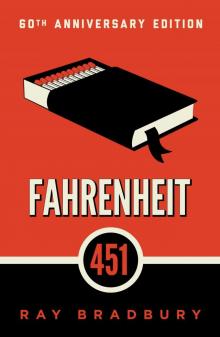 Fahrenheit 451
Fahrenheit 451 Zen in the Art of Writing
Zen in the Art of Writing The Halloween Tree
The Halloween Tree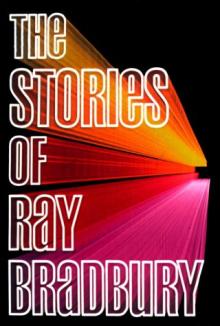 The Stories of Ray Bradbury
The Stories of Ray Bradbury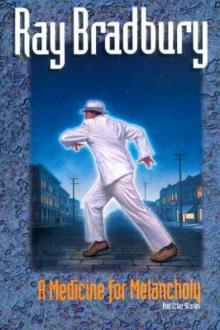 A Medicine for Melancholy and Other Stories
A Medicine for Melancholy and Other Stories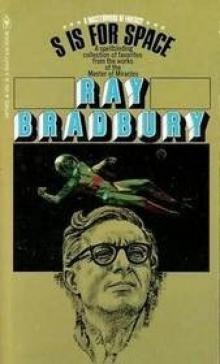 S Is for Space
S Is for Space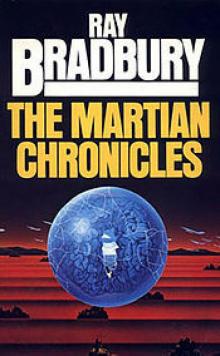 The Martian Chronicles
The Martian Chronicles Futuria Fantasia, Winter 1940
Futuria Fantasia, Winter 1940 Farewell Summer
Farewell Summer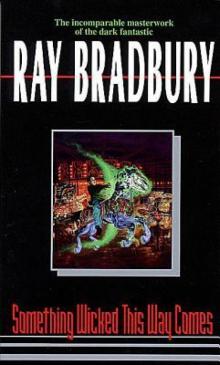 Something Wicked This Way Comes
Something Wicked This Way Comes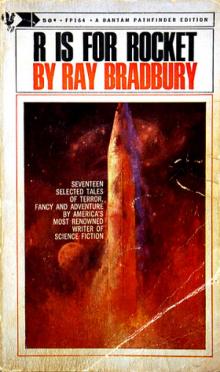 R Is for Rocket
R Is for Rocket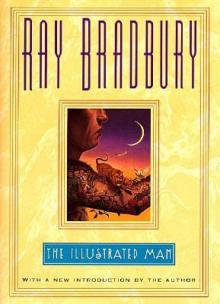 The Illustrated Man
The Illustrated Man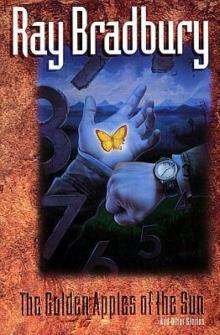 The Golden Apples of the Sun
The Golden Apples of the Sun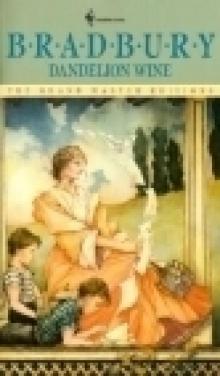 Dandelion Wine
Dandelion Wine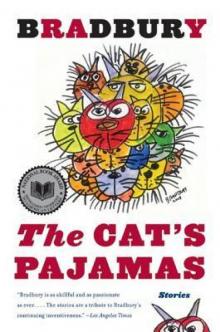 The Cat's Pajamas
The Cat's Pajamas A Graveyard for Lunatics
A Graveyard for Lunatics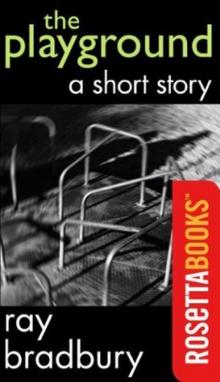 The Playground
The Playground We'll Always Have Paris: Stories
We'll Always Have Paris: Stories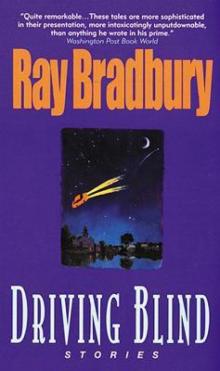 Driving Blind
Driving Blind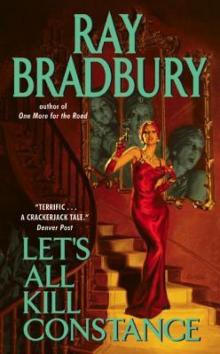 Let's All Kill Constance
Let's All Kill Constance The Day It Rained Forever
The Day It Rained Forever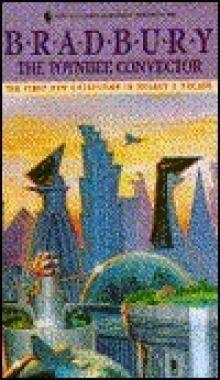 The Toynbee Convector
The Toynbee Convector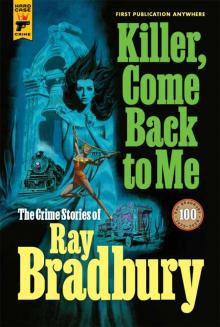 Killer, Come Back to Me
Killer, Come Back to Me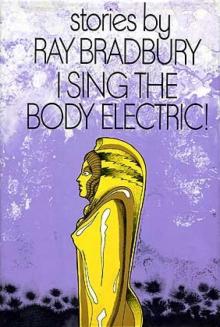 I Sing the Body Electric
I Sing the Body Electric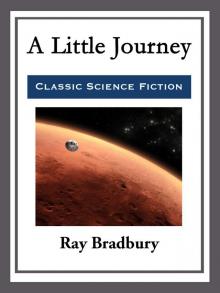 A Little Journey
A Little Journey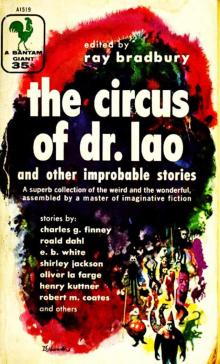 The Circus of Dr Lao and Other Improbable Stories
The Circus of Dr Lao and Other Improbable Stories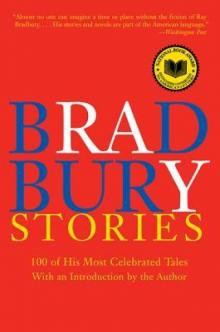 Bradbury Stories: 100 of His Most Celebrated Tales
Bradbury Stories: 100 of His Most Celebrated Tales From the Dust Returned
From the Dust Returned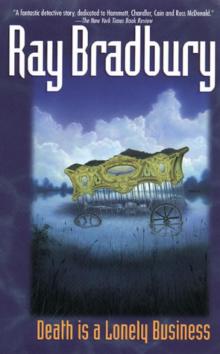 Death Is a Lonely Business
Death Is a Lonely Business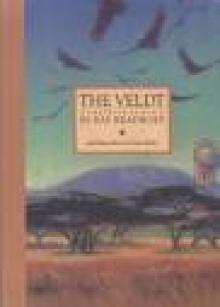 THE VELDT
THE VELDT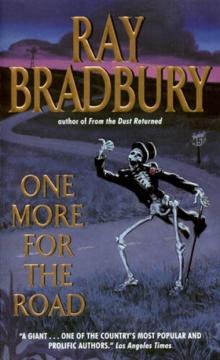 One More for the Road
One More for the Road Futuria Fantasia, Summer 1939
Futuria Fantasia, Summer 1939 The Small Assassin
The Small Assassin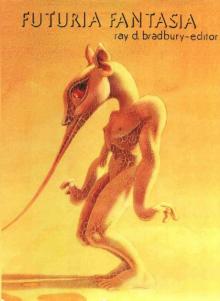 Futuria Fantasia, Fall 1939
Futuria Fantasia, Fall 1939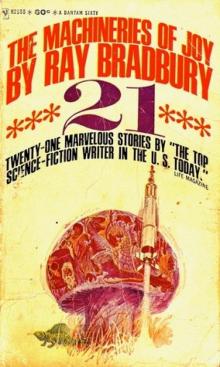 Machineries of Joy
Machineries of Joy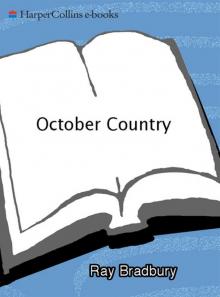 The October Country
The October Country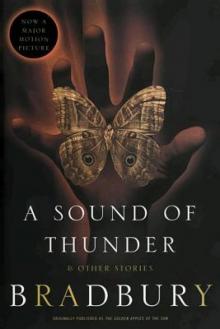 A Sound of Thunder and Other Stories
A Sound of Thunder and Other Stories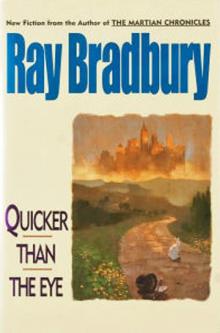 Quicker Than the Eye
Quicker Than the Eye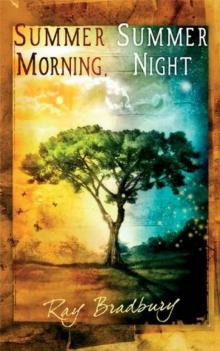 Summer Morning, Summer Night
Summer Morning, Summer Night Yestermorrow
Yestermorrow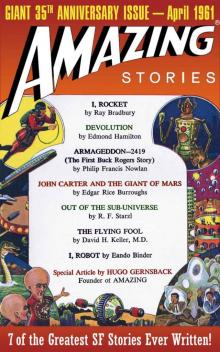 Amazing Stories: Giant 35th Anniversary Issue (Amazing Stories Classics)
Amazing Stories: Giant 35th Anniversary Issue (Amazing Stories Classics)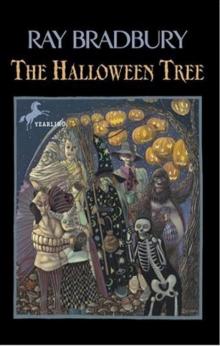 (1972) The Halloween Tree
(1972) The Halloween Tree Listen to the Echoes
Listen to the Echoes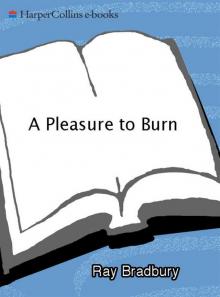 A Pleasure to Burn
A Pleasure to Burn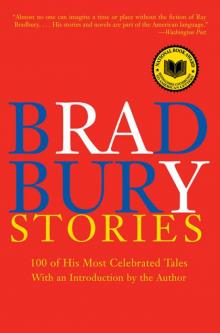 Bradbury Stories
Bradbury Stories Bradbury Speaks
Bradbury Speaks Ray Bradbury Stories Volume 2
Ray Bradbury Stories Volume 2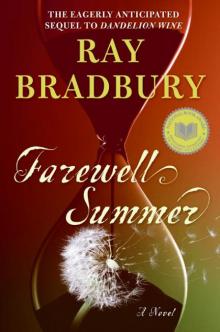 Farewell Summer gt-2
Farewell Summer gt-2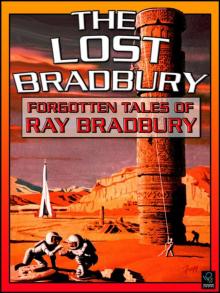 The Lost Bradbury
The Lost Bradbury Green Shadows, White Whale
Green Shadows, White Whale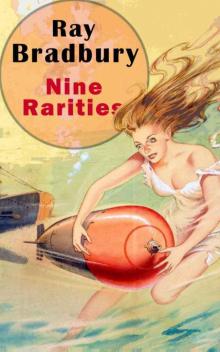 Nine Rarities
Nine Rarities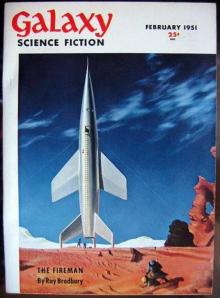 The Fireman
The Fireman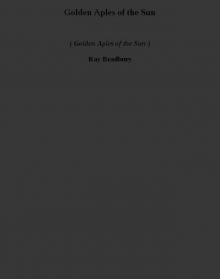 Golden Aples of the Sun (golden aples of the sun)
Golden Aples of the Sun (golden aples of the sun)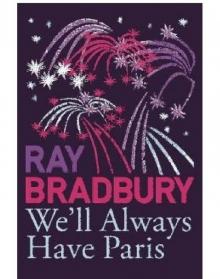 We'll Always Have Paris
We'll Always Have Paris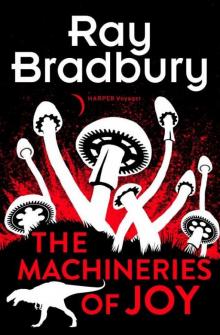 The Machineries of Joy
The Machineries of Joy A Graveyard for Lunatics cm-2
A Graveyard for Lunatics cm-2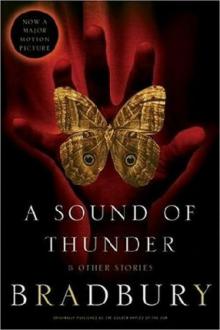 The Sound of Thunder
The Sound of Thunder Where Robot Mice and Robot Men Run Round In Robot Towns
Where Robot Mice and Robot Men Run Round In Robot Towns